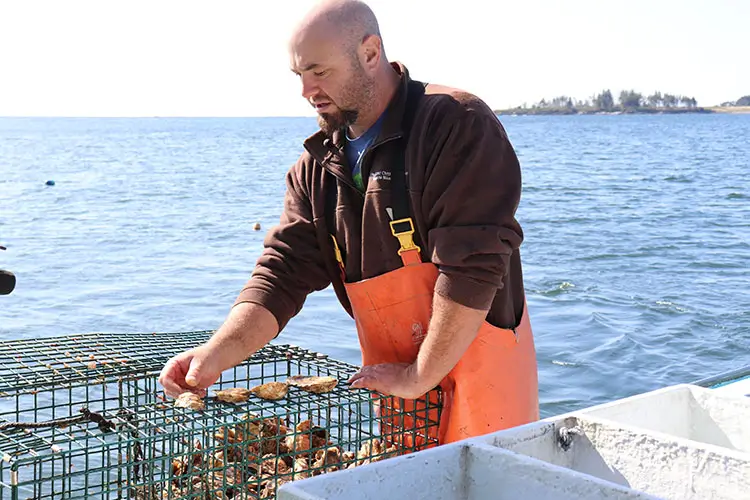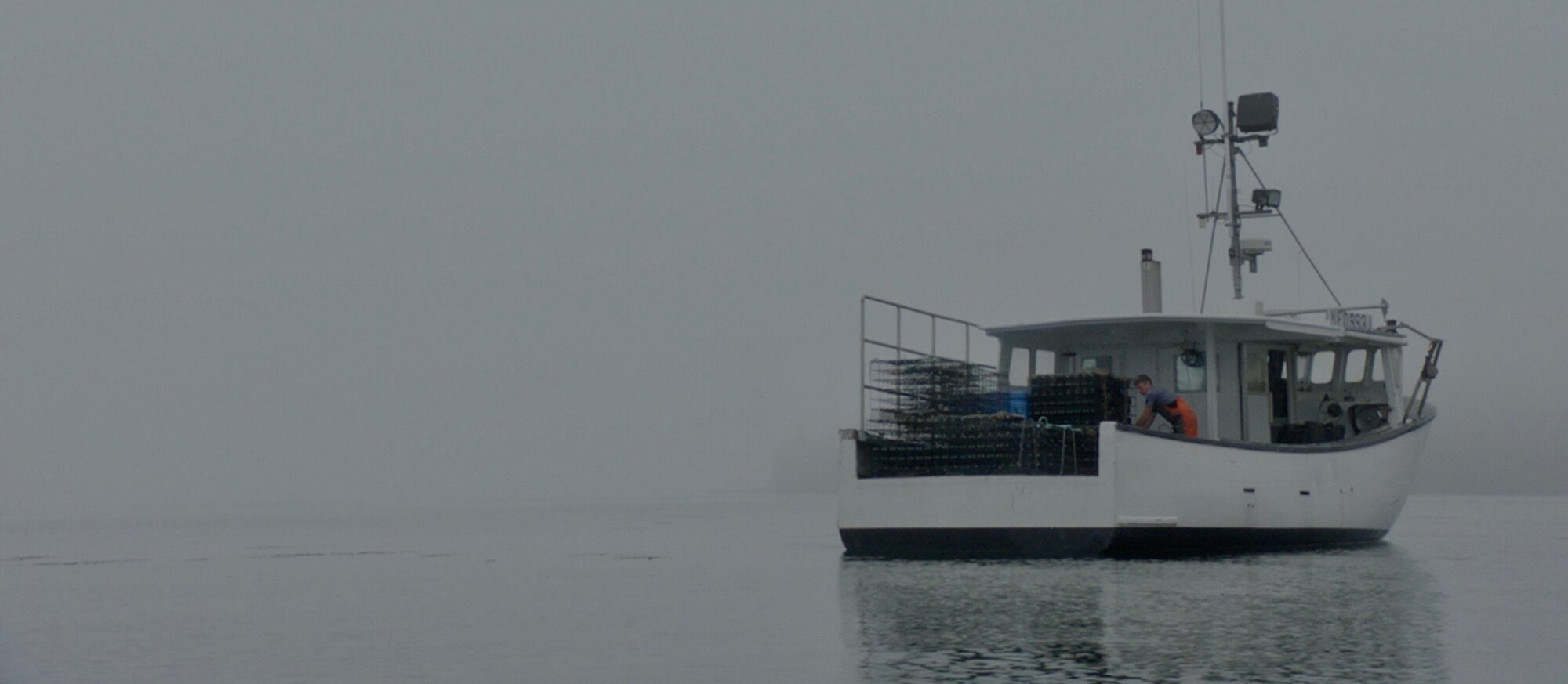Our Story
Aquaculture, the farming of aquatic organisms such as fish, shellfish, and sea vegetables, plays a vital role in meeting the increasing global demand for seafood.
With over 85 percent of seafood consumed in the United States being imported, the need for domestic sustainable aquaculture production has never been greater.
In Maine, the aquaculture sector has seen significant growth, both in production and the number of farms, thanks in large part to the efforts of the Maine Aquaculture Association (MAA).

The Evolution of the Maine Aquaculture Association
Founded as a voluntary organization in Orono, Maine, in January 1978, the MAA operated without full-time staff until 1990 when it hired its first executive director. In 2000, an office manager position was added, followed by the development and implementation of Best Management Practices (BMPs) as a core mission.
The addition of a technical project manager staff position in 2002 and a communications and outreach position in 2019 further strengthened the association’s ability to support the aquaculture sector.
The MAA’s original goals were to serve as a collective voice for the industry, provide information to those outside the sector, facilitate knowledge sharing among farmers, and collectively market their products.
As the organization grew and full-time staff came on board, the role of the Board of Directors evolved to focus on oversight, representation of different types of aquaculture businesses, and the development of a vision for the sector based on member input.
Advancing Responsible Aquaculture Practices
The MAA has been at the forefront of promoting responsible aquaculture practices in Maine. One of our notable achievements was the development of comprehensive BMPs for our members, which included an overarching Code of Conduct, biosecurity plans, and escape prevention measures.
The association also pioneered the implementation of third-party auditing of these key components of the BMPs, ensuring accountability and transparency within the sector.
Furthermore, the MAA played a significant role in the establishment of legally binding Area Management Agreements. These agreements bring together farms in a common local area, fostering cooperation and adherence to a set of shared standards.
By working collaboratively, the aquaculture sector in Maine has been able to maintain steady and sustainable growth, contributing to the state’s reputation for providing high-quality and healthy seafood.
Maine Aquaculture: A Growing Sector with a Promising Future
Maine’s aquaculture sector has experienced remarkable growth, outpacing the national average. With its proximity to major consumer markets and a strong brand reputation, the state has become a hub for high-quality fresh seafood.
The demand for seafood has risen significantly in the past 30 years, and Maine is well-positioned to meet this demand.
The MAA’s commitment to supporting its members through training, BMPs, and business support services has been instrumental in the sector’s success. As new farms emerge, the association’s role in advocacy, grower training, and community outreach becomes increasingly crucial.
By ensuring responsible practices and promoting sustainable growth, the MAA and its members are driving the Maine aquaculture industry toward a prosperous and responsible future.
Get In Touch
The Maine Aquaculture Association’s journey toward responsible aquaculture has been marked by continuous growth, innovation, and commitment to sustainable practices.
Through the development of comprehensive BMPs, implementation of third-party auditing, and establishment of Area Management Agreements, the MAA has played a vital role in shaping the sector and ensuring its long-term viability.
With the MAA’s ongoing support and the collective efforts of its members, responsible aquaculture practices will continue to thrive, ensuring a sustainable future for Maine’s aquaculture community.
Q&A
What was the date of the founding agreement?
We were founded in January 1978.
Were there major changes over the life of the organization? When and why did changes occur?
Up until 1990 the organization was voluntary and had no full-time staff. Starting in 1990, the MAA hired a full-time executive director. In 2000, the MAA hired an office manager and added the development and implementation of Best Management Practices to its core mission. In 2002, it added a technical project manager staff position and in 2020 it added a full-time communications and community outreach position. Over time the role of the Board of Directors evolved to become a representative board. Each board member is selected to represent a particular species, production method, and/or size of company.
What were the names of the founders and key leaders? Why were they involved in the organization? What were their responsibilities or obligations?
Their original intent was to form a community of farmers who were working together to advocate for the sector, learn from each other, and collectively market their products. Each founding member became a board of directors member and as volunteers they executed the work they collectively considered to be a priority. Once full-time staff came on, the Board of Director's role shifted to oversight of staff, representation of the various types and sizes of aquaculture businesses, and the continuous development of a vision for the sector based on member input.
What was the initial reason for the formation of the organization? What were its goals? How did these goals change over time? How did the organization succeed or fail in achieving them?
The original goals were to form an effective organization to represent the interests of the sector, to serve as the place people outside the sector could go to get information about the sector, to serve as a vehicle to share knowledge between the farmers, and to help collectively market products. Also see above. Over time the need for collective marketing was reduced as companies developed their individual brands. The needs for sector advocacy, development of BMPs, grower training, grower business support, and community outreach and public relations have increased. MAA was the first aquaculture farmers' organization to develop comprehensive BMPs for their members and to implement third-party auditing of key components of those BMPs.Those key components included an overarching Code of Conduct, biosecurity, and escape prevention plans. In addition, MAA was one of the first farmers' organizations whose members developed and signed legally binding Area Management Agreements, where farms in a common, local area agreed to cooperate and manage to a common set of standards.
What was the original location of the organization? Did that location change? When, where, and why?
When we were founded in 1978, we were based in Orono because of our links to the University of Maine. In 1990, we relocated to Brewer and remained there for ten years. In 2000, we recognized a need to be closer to the state capitol and legislature, so we moved our office to Hallowell. In January 2023, we relocated to an office right in downtown Gardiner on Water Street.
What social, cultural, political, economic, environmental, etc., impact did the organization have at the local, state, and/or national level? How did that change over time?
As MAA evolved from a voluntary organization to a professionally staffed organization, its impact increased. Through its technical and advocacy work the Maine aquaculture sector has become viewed as an innovative leader at a state and national level. We frequently get visits from other state, national and international organizations who come to Maine to learn about how our aquaculture sector has scaled up while also protecting the environment, the public trust and cooperating with other marine resource user groups. MAA’s work on BMPs, community education, and grower training programs have served as models for other groups at a national and international level. MAA is currently refocusing on its local community outreach and education to help communities understand how aquaculture can help preserve working waterfronts and coastal communities' maritime heritage.
What was the relationship between this organization and other similar groups? How is this organization different? Was the organization a part of a national umbrella organization?
We have many strategic alliances with organizations that are focused on environmental protection and the responsible use of natural resources. We also have close relations with groups who are working to protect and preserve Maine’s agriculture, forestry and working landscapes and waterfronts. MAA’s funding structure is different from some of these other groups because we are funded by voluntary membership dues. We are a member of the National Aquaculture Association and our Executive Director currently serves as its president.
What was happening at the state or national level that affected the organization or influenced its founding, changes over time, or dissolution? What was the organization’s impact on Maine and/or the country?
Maine has a long tradition of providing high-quality, healthy seafood to national and international markets. The demand for seafood has increased dramatically over the last 30 years. Maine has a great brand reputation and the state is within a 24-hour truck drive of 130 million consumers eager for high-quality fresh seafood (Chicago to the west and Atlanta to the south). The United States imports over 85% of the seafood it consumes. At a national level, aquaculture production has increased slightly (< than 1%) over the last 25 years. Aquaculture production in Maine during that same period has increased at double the national rate. The number of farms in the Maine aquaculture sector has also increased. Many of those farms are relatively new and the training, BMPs, and business support services provided by MAA to the sector have been critical in the steady and sustainable growth of the sector.
